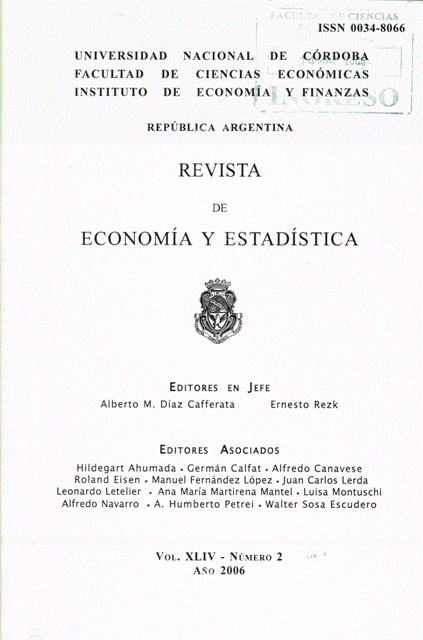El libre Albedrio y los Conceptos de Racionalidad y de Elección Racional en la Ciencia Económica
DOI:
https://doi.org/10.55444/2451.7321.2006.v44.n2.3829Keywords:
racionalidad teórica, racionalidad práctica, libre albedrío, racionalidad instrumentalAbstract
La noción de racionalidad es una de las más básicas utilizadas en los análisis económicos y de toma de decisiones empresariales. Pero también es una de las más controvertidas. La noción más tradicional de racionalidad en la ciencia económica, también identificada como “racionalidad clásica o neoclásica”, basada en la tradición de Hume, se refería a la manera óptima de utilizar medios para alcanzar determinados fines sin entrar a analizar ni la calidad o “racionalidad” de los medios y tanto menos de los fines. A fin de superar algunos de los problemas impuestos por tales limitaciones se analiza el significado del concepto de racionalidad distinguiendo entre racionalidad teórica y racionalidad práctica. También se considera el problema del libre albedrío y el determinismo. Y para comprender como las personas pueden tomar decisiones que se apartan del modelo de optimización se presentan distintos puntos de vista o nociones de racionalidad pertinentes en el análisis económico y en la teoría de la elección racional: racionalidad instrumental, racionalidad sustantiva y racionalidad de procedimientos, entre las más importantes.
Downloads
Downloads
Published
Issue
Section
License
Copyright (c) 2006 Luisa Montuschi

This work is licensed under a Creative Commons Attribution-NonCommercial-NoDerivatives 4.0 International License.
Authors who have publications with this journal agree to the following terms:
Authors retain their copyright and grant the journal the right of first publication of their work, which is simultaneously subject to the Creative Commons Attribution-NonCommercial-NoDerivatives 4.0 International License that allows third parties to share the work provided that its author and first publication in this journal are indicated.
Authors may adopt other non-exclusive licensing arrangements for distribution of the published version of the work (e.g. depositing it in an institutional telematic archive or publishing it in a monographic volume) as long as the initial publication in this journal is indicated.
Authors are allowed and encouraged to disseminate their work via the Internet (e.g. in institutional telematic archives or on their website) before and during the submission process, which can lead to interesting exchanges and increase citations of the published work. (See The Open Access Effect)










